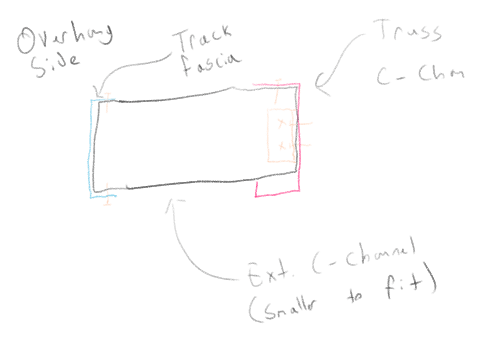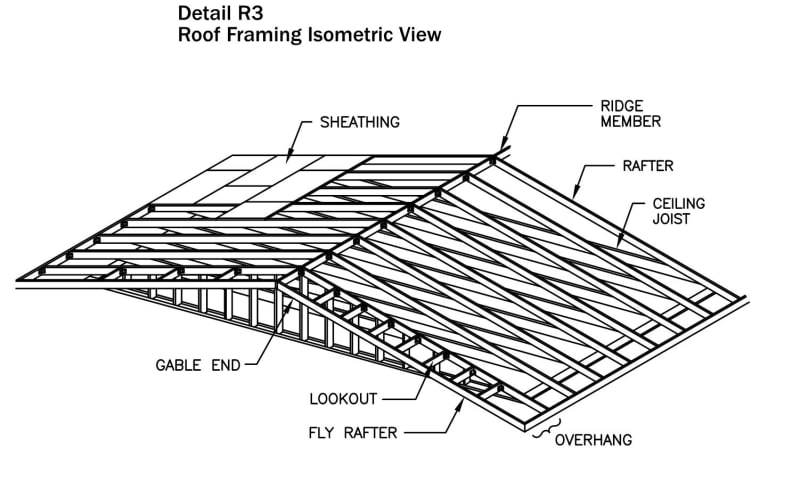This is a continuation of my previous thread on stairwell enclosures. The EOR has blessed the use of CFS trusses, but unfortunately the construction is to the point where the walls will remain double-wythe solid brick. I'm sure the details I am going to inquire about must be standard fare, but I am green when it comes to CFS and have no feel for what CFS can do, so please point me in the right direction!
I'm primarily concerned with the perimeter details at the eaves and overhangs. See A / B in the picture below.

For the eaves (location B) I was thinking of detailing a conventional bell-bottom arrangement similar as you would in any wood project. An example found here. It's mostly the extension of the last truss at location A, as well as the connection to the overhang at B that gives me some pause. I imagine what's going on in the picture below is that the extension pieces fit into the C-channel of the closest rafter and are tied together at the flanges (perhaps via the web w/ clip angle).
Sketch of what I am thinking

This seems like it could be very flimsy to me given the ability to rotate. That said, if the roof sheathing is continuous for at least a few trusses maybe this assembly doesn't need to be very strong at all. Basically what I am asking here is: how is this typically framed?
CWB (W47.1) Div 1 Fabricator
Temporary Works Design
I'm primarily concerned with the perimeter details at the eaves and overhangs. See A / B in the picture below.

For the eaves (location B) I was thinking of detailing a conventional bell-bottom arrangement similar as you would in any wood project. An example found here. It's mostly the extension of the last truss at location A, as well as the connection to the overhang at B that gives me some pause. I imagine what's going on in the picture below is that the extension pieces fit into the C-channel of the closest rafter and are tied together at the flanges (perhaps via the web w/ clip angle).
Sketch of what I am thinking

This seems like it could be very flimsy to me given the ability to rotate. That said, if the roof sheathing is continuous for at least a few trusses maybe this assembly doesn't need to be very strong at all. Basically what I am asking here is: how is this typically framed?
CWB (W47.1) Div 1 Fabricator
Temporary Works Design

